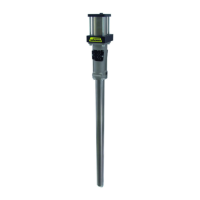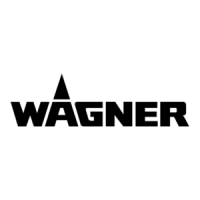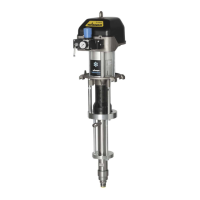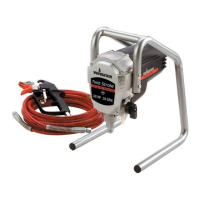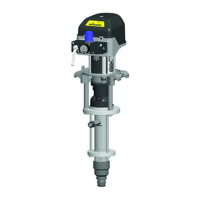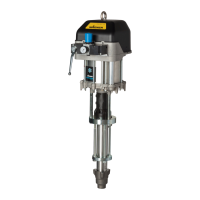17
OPERATING MANUAL
VERSION 12/2015
ORDER NUMBER DOC2333558
4.2.4 CLEANING AND FLUSHING
Relieve the pressure from the device.
De-energize the device electrically.
Preference should be given to non- ammable cleaning and ushing agents.
When carrying out cleaning work with ammable cleaning agents, make sure that all
equipment and resources (e.g., collection tank, funnel, transport cart) are conductive or
static dissipative and grounded.
Observe the speci cations of the paint manufacturer.
Ensure that the ash point of the cleaning agent is at least 15 K above the ambient
temperature or that cleaning is undertaken at a cleaning station with technical
ventilation.
Take measures for workplace safety (see Chapter 4.1.3).
When commissioning or emptying the device, please note that an explosive mixture
may temporarily exist inside the lines and components of equipment:
- depending on the coating product used,
- depending on the ushing agent (solvent) used,
explosive mixture inside the lines and items of equipment.
Make sure that the hoses are laid only in suitable places. Do not lay hoses:
- in high-traffic areas,
- on sharp edges,
- on moving parts or
- on hot surfaces.
Ensure that the hoses are never run over by vehicles (e.g., fork lifts), or that the hoses are
never put under pressure from the outside in any other way.
Ensure that the hoses are never kinked. Observe maximum bending radii.
Make sure that the hoses are never used to pull or move the equipment.
The electrical resistance of the product hose, measured at both valves, must be less
than 1 megohm.
Suction hoses may not be subjected to pressure.
Several liquids have a high expansion coe cient. In some cases their volume can rise with
consequent damage to pipes, ttings, etc. and cause uid leakage.
When the pump sucks liquid from a closed tank, ensure that air or a suitable gas can
enter the tank. Thus a negative pressure is avoided. The vacuum could implode the tank
(squeeze) and can cause it to break. The tank would leak and the liquid would ow out.
The pressure created by the pump is a multiplication of the inlet air pressure.
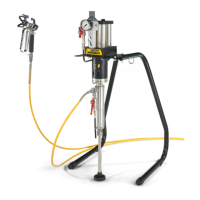
